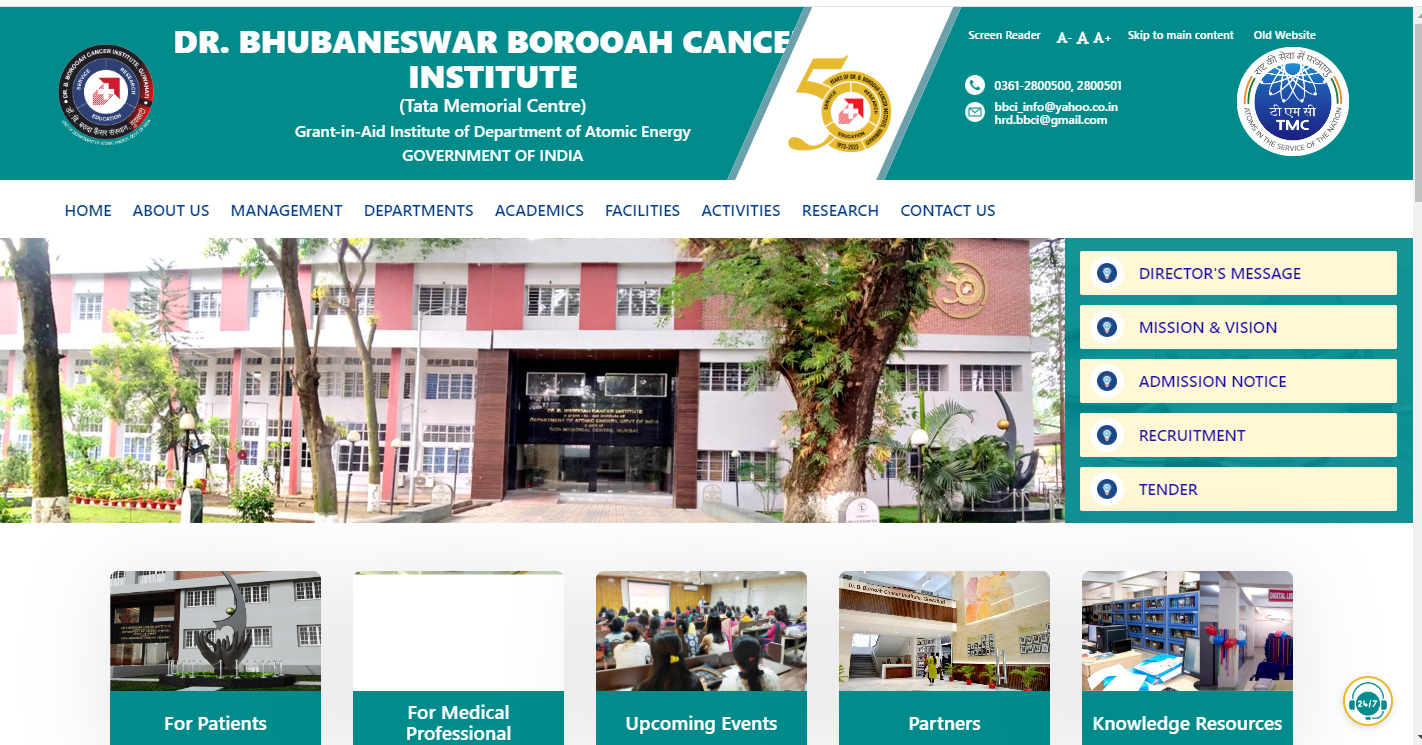Dr. B. Borooah Cancer Institute (Regional Cancer Centre), Guwahati

Dr. Bhubaneswar Borooah Cancer Institute (BBCI) was set up by a voluntary organization called 'Dr. B. Borooah Cancer Society Trust'. Dr. Bhubaneswar Borooah (4th September 1893 - 25th September 1956) was a great physician, freedom fighter and philanthropist of Assam. In 1958 at a public meeting in Guwahati, a decision was taken to set up a cancer hospital at Guwahati to commemorate the memory of Dr. Bhubaneswar Borooah. Late Debendra Nath Sarma was the Founder President and Late Dr. Kanak Chandra Borooah, illustrious brother of Dr. Bhubaneswar Borooah was the Founder Secretary.
- Read more about Dr. B. Borooah Cancer Institute (Regional Cancer Centre), Guwahati
- Log in to post comments
- 74 views
